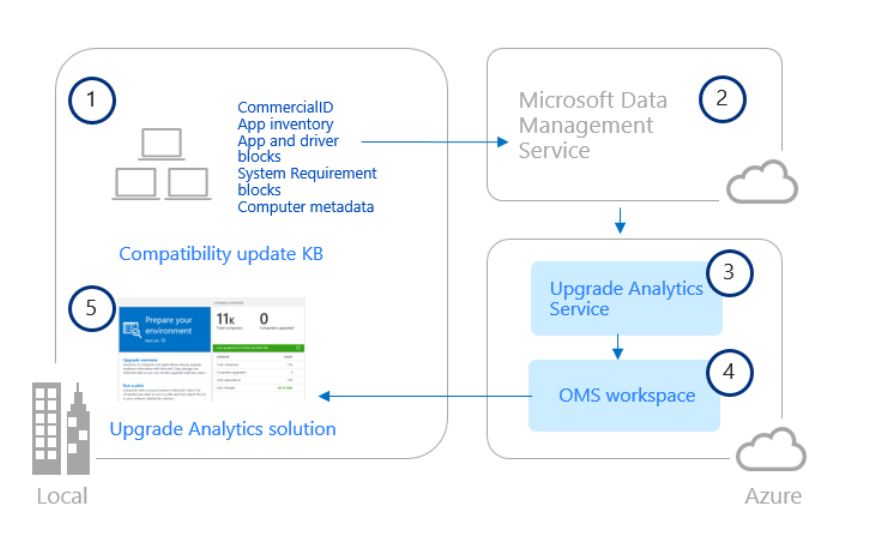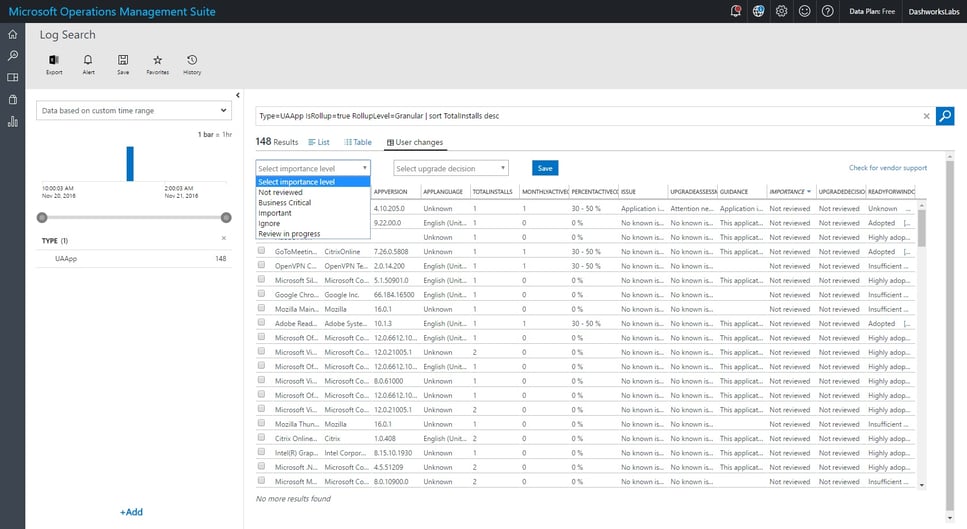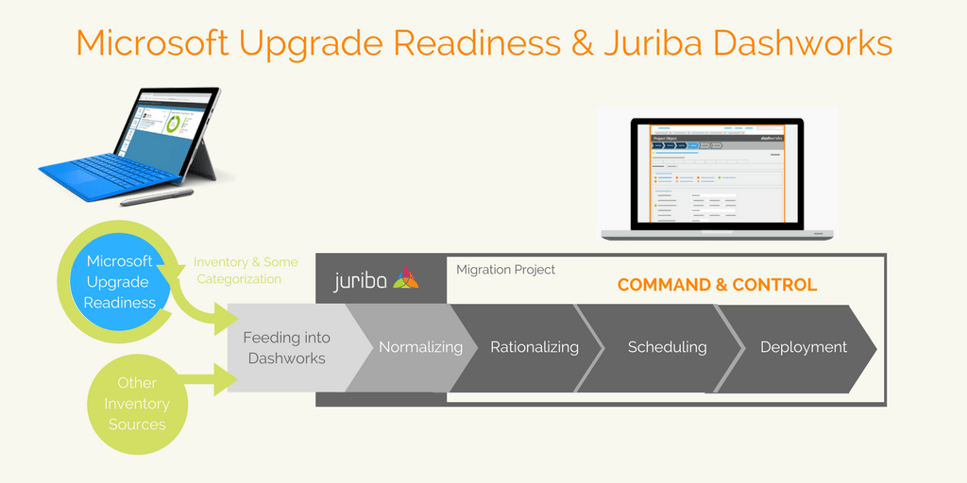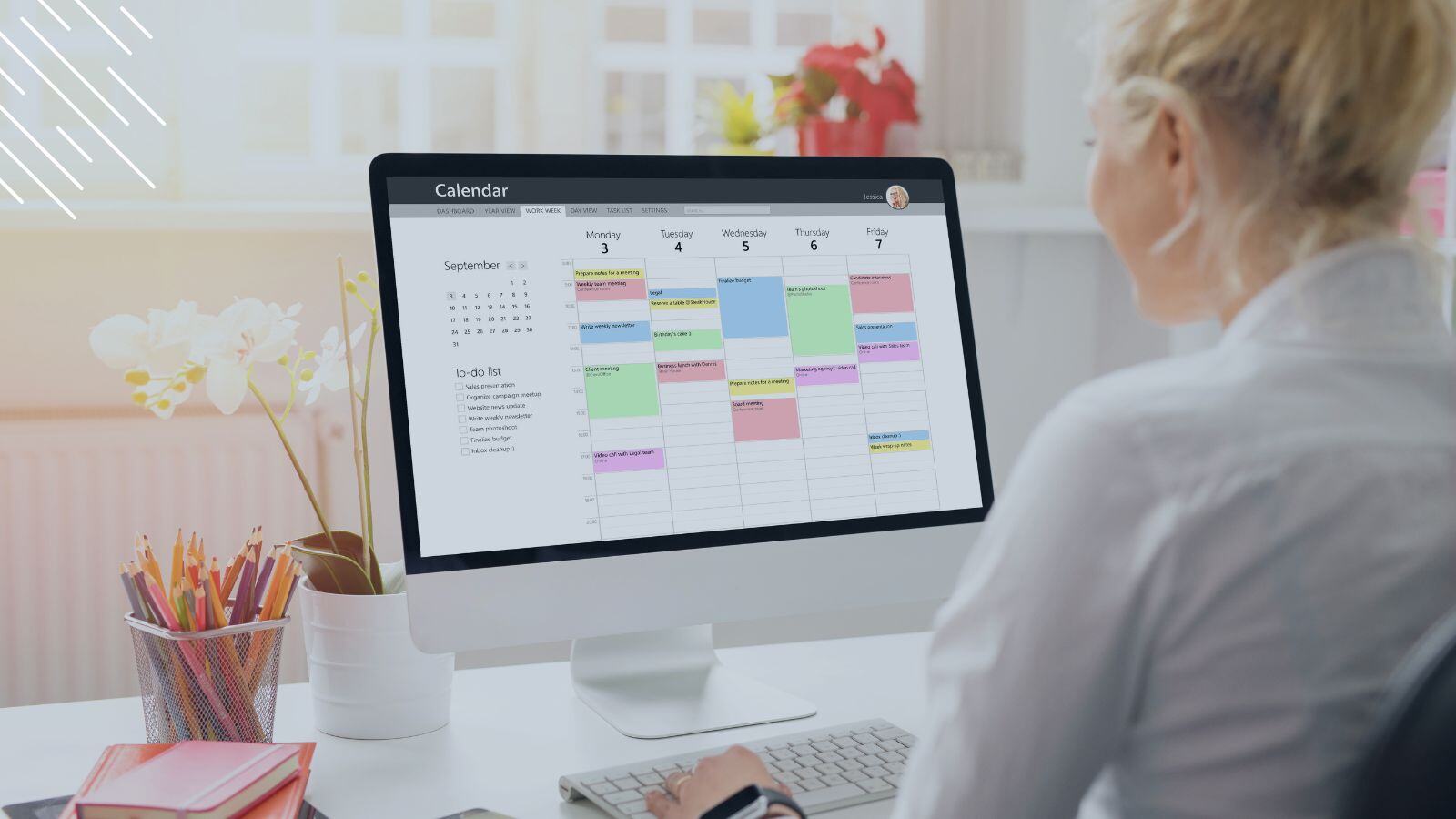What Every IT Migration Manager Should Know About Microsoft Upgrade Readiness Tooling
November 22nd, 2016
6 min read
By Barry Angell

On July 22nd 2016, Microsoft released the public preview of a new cloud-based tool called Microsoft Upgrade Analytics, a telemetry based tool designed to help organizations looking to move from older versions of the Windows Operating System to Windows 10. This tool was subsequently renamed to Microsoft Upgrade Readiness.
IT migration project managers are wondering how exactly this new software fits in with their migration stack, and whether or not it can replace more sophisticated migration or IT transformation tools, such as Juriba's Dashworks Analysis and Analysis +.
Today, we took a closer look at this new tool and will explain how Upgrade Readiness can integrate with and add value to Dashworks. But before we do that, let's have a quick look at what exactly Upgrade Readiness is, and how it is different from previous Microsoft application compatibility and readiness tools.
Microsoft Application Compatibility Toolkit
Upgrade Readiness is not the first application compatibility assessment tool that Microsoft has released. For a while, Microsoft has been trying to build an ecosystem around application and hardware readiness.
To help accelerate the migration from Windows XP to Windows 7, Microsoft offered a tool called Microsoft ACT (Application Compatibility Toolkit). It was a locally installed agent that analysed the applications as they ran, reported the data back up to a database in the cloud, and matched it to known data based on its own testing and community feedback.
For large enterprise customers however, when the tool was run, a relatively small percentage of applications were often matched to the database, leaving a significant amount of analysis in the hands of the IT department. Further issues with the community aspect of the tool were experienced with differing compatibility responses being submitted for the same application. As a result, the tool found more success in the small business market where application estates were reduced, whilst larger organizations turned to AppDNA and ChangeBase for static application compatibility analysis, combined with manual rationalization work on Excel sheets.
In conjunction with ACT, Microsoft continues to offer organizations help with migration analysis with their Microsoft Assessment Planning Toolkit (MAP). This tool collects hardware inventory and performs readiness assessment based on hardware specification, as well as some additional analysis and reporting on facets such as virtual candidacy based on PC performance monitoring.
What Exactly Is Microsoft Upgrade Readiness?
Microsoft Upgrade Readiness was released to public preview on 22nd July 2016, and is a free tool offered as part of the Microsoft Operations Management Suite (OMS) — a set of Azure-based services for managing your on-premise and cloud environments. The purpose of Upgrade Analytics is to analyze your on-premise applications and hardware for application compatibility in preparation for Windows 10 migration.

(Image Credit: Microsoft)
For enterprises to deploy upgrade readiness, a desktop client rollout is required in order to send data to the Microsoft servers. For large organizations, this may require certification of the client software and also a compliance review as to the data it is collecting and sending offsite. From a technical point of view, you simply add the Upgrade Readiness option to your Operations Management Suite portal workspace and establish communications between each of the tracked machines in your organization and Microsoft. Now, the tool is ready to collect computer, application, and driver data for further compatibility analysis.
So how does Upgrade Readiness determine compatibility? For consumers, the home versions of Windows 10 contained a piece of code that is tracking application usage and sends telemetry data to Microsoft to consolidate. It is this telemetry data, rather than community feedback, that dictates whether an application looks compatible with Windows 10 or not. Put simply, if enough devices are running a particular version of an application, the assumption is that it works correctly on the OS.
But UR doesn't just rely on volume-based analysis. Microsoft compiles your and other organization's compatibility data into a huge data warehouse and compares it to vendor support statements that have been made available by the application manufacturers (e.g., Adobe) in the Windows Ready store to identify any known compatibility issues or upgrade paths.
In your Operations Management Suite dashboards, you can identify where your data is coming from and group your computers into categories such as site or department.

You are able to see which devices look ready (green) for migration right away based on the collected hardware and software information. From here, you download the output into an Excel sheet and manually handle the migration or feed it into a migration management tool, such as Dashworks, to build a project framework, as well as handle your scheduling and deployment activities. We are promised integration with System Center Configuration Manager in a future release so that deployment of the upgrade can be triggered.
Upgrade Readiness allows you also to determine which of your applications will work on Windows 10, which are ready for upgrade, and which do not work. For example, on one of our test devices, a driver was identified that was incompatible, but would be fixed on upgrade, meaning that it was ready to go.
It also enables you to categorize all of your applications based on business criticality (Not Reviewed, Review In Progress, Important, Business Critical and Ignore), and assign an upgrade decision (Not Reviewed, Review In Progress, Ready To Upgrade, Won't Upgrade). Once you have performed your categorization, you wait for the nightly transform process, and the next time you access, UR will have re-analyzed your input to provide further readiness reporting.

A further function is that the system also collects web usage information (linking with Microsoft's Site Discovery telemetry tool) such as the sites that are opened in each browser, and whether they are launching an associated active control to get up and running. It also checks whether Enterprise Mode was used to try and identify real web applications vs standard web sites. UR displays this information in a combination of graphs and tables.
It is important to know that Upgrade Readiness only works on Windows 7 SP1 and Windows 8.1 — it cannot evaluate Windows XP or Windows Vista for upgrade eligibility. Right now, there is also no onward actionability. As soon as your devices are migrated to Windows 10, they drop out and age as the agent is cannot run on Windows 10, although we are sure this will change when the tool begins to support ongoing Windows 10 branch or servicing analysis. Note also that the tables and exports will only currently support a maximum of 5,000 rows, so for larger organizations, you will need to filter the views to get the results you want.
In contrast to ACT, Microsoft Upgrade Readiness is a purely cloud-based product with no on-premise installation possible. Therefore, all of the clients across your entire estate are directly talking to the cloud with the system updating on a scheduled basis. Access to the front end UI is achieved through permissions to your Microsoft OMS console and changes made today will not appear until tomorrow.
Upgrade Readiness & Juriba Dashworks
Since the intention of Upgrade Readiness is to provide a complete end-to-end workflow for Windows 10 upgrade, the question has arisen - do we need Dashworks if we have UR?
Dashworks is a complete Windows 10 migration end-to-end command and control solution suitable for enterprise migrations running to hundreds of thousands of devices. It uses sophisticated data warehouse techniques to aggregate multiple sources of data into one single source of information to baseline the project and position the platform to run the thousands of activities necessary to achieve a successful migration.

Our software catalogue contains over 2 million vendor products and will normalize and categorize them automatically, plus provide a specific upgrade path for each. UR is a tool that collects specific information on computers and applications to determine compatibility. It is this fundamental difference that is why we are working extensively with the UR product team, since UR is a great discovery solution for organizations that do not have tooling in place.
As such, UR would be a data feed in the same way that we link with tools like Lakeside Systrack to bring in data on computers and applications before layering on the Dashworks departments, locations, custom fields, mailboxes and other information required for the project. Even for organizations with inventory data, the telemetry and support information of UR adds a very useful layer of application rationalization information.
But the key differentiator is in the project command and control. Dashworks tracks hundreds of readiness items across users, computers and applications (including application packaging) to determine status for migration. It groups everything so that you can get a view on how ready a particular site or set of machines is for upgrade. It emails the end users in multi-language and includes self-service for data validation for end users or site champions. It enables multiple reports, handles bulk updates for everything you might want to change and supports multiple simultaneous projects. Dashworks can be customised for bespoke workflow and is built for orchestration and deployment triggering. UR has not been built to perform the same functions.
IT teams using Dashworks can get an actionable, real-time, real-world project view that allows them not only to see things as they are (e.g., the connection between users, installed / used applications and their devices), but also lets you track everything else outside of applications and hardware (e.g., purchasing of hardware).
It is the rich data set, rather than the tool functions that makes Upgrade Readiness very complementary to the advanced project command and control that we perform with Dashworks. By using UR as a data feed, we can enrich the information that is provided natively with the existing tools to provide even better actionable information to our project managers.
Future Outlook For Upgrade Readiness
We are excited about the future for Upgrade Readiness. By creating such a rich data set in the cloud, telemetry can help us to start driving some advanced analytics. Think about Windows 10 branching for example. Consumers typically get the updates first, so the ability to draw on their experience will be very valuable to corporates entering into the same deployment cycle. Collection of web application data will enable better management of future Internet Explorer updates.
We hope that the team will also consider application usage and the tracking of plug-ins like Excel macros as information here would be of great assistance. There are so many areas it could be developed. Maybe even a tie to System Center Configuration Manager on-premise!
By pairing UR with Dashworks, organizations can experience an even greater level of project decision accuracy and accelerated migration pathing. We're working closely with Marc-Andreas and his team at Microsoft to build the extended capabilities of Dashworks to further add value to the future roadmap of Upgrade Readiness. It may only be the first baby step on this journey, but we are sure that it is the first of many. Stay tuned...
Barry is a co-founder of Juriba, where he works as CEO to drive the company strategy. He is an experienced End User Services executive that has helped manage thousands of users, computers, applications and mailboxes to their next IT platform. He has saved millions of dollars for internal departments and customers alike through product, project, process and service delivery efficiency.







![Windows 11 Enterprise Vs. Professional [A Comparison]](https://blog.juriba.com/hs-fs/hubfs/Windows%2011%20Enterprise%20Vs.%20Professional%20%5BA%20Comparison%5D.jpg?width=1600&height=900&name=Windows%2011%20Enterprise%20Vs.%20Professional%20%5BA%20Comparison%5D.jpg)














.png?width=1920&height=1492&name=Juriba%20-%20Windows%2011%20Assessment%20Service%20(Hardware%20II).png)
